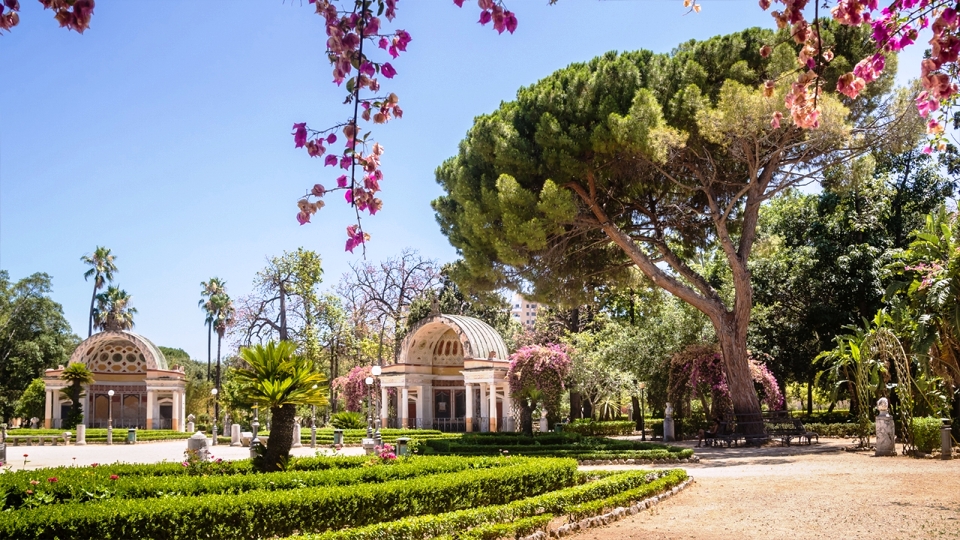Botanical Garden of the University of Ferrara
Botanical Garden of the University of Ferrara The Botanical Garden of the University of Ferrara is an institution of the
Read more
 This section is dedicated to the Botanical Gardens, that is, those natural environments that collect large varieties of plants categorized for scientific purposes and for the education of visitors.
This section is dedicated to the Botanical Gardens, that is, those natural environments that collect large varieties of plants categorized for scientific purposes and for the education of visitors.
The term botanical garden (in Latin hortus botanicus) or botanical garden is an environment with the presence of various floristic species to which a library and a herbarium for the study and cataloging of the species is often associated.
The origin of complexes similar to the current botanical gardens can be traced back to ancient times: from the “Botanical Garden of Karnak” of the Egyptian pharaoh Tutmose III, to the collections of medicinal plants from the Athenian period (eg Theophrastus in the fourth century BC) [1] or Roman (Hortus conclusus).
Other examples spread in the Middle Ages and later in the Renaissance, when the cultivation of medicinal plants spread in the Horti sanitatis located in the monasteries and in the medical and pharmacy schools of the universities.
The first botanical garden in the western world was built in Salerno by Matteo Silvatico, a distinguished doctor of the Salerno medical school between the thirteenth and fourteenth centuries.
The oldest institutions of this type are the Vatican Garden in Rome (1447) and the Echtiano Garden in Cologne (1490). To this was added a didactic need addressed to university students, which led to the birth of the first botanical gardens. Thus the Botanical Garden of Pisa was born in 1544; the Botanical Garden of Padua in June 1545, that of Florence in December 1545, that of Bologna in 1567.
Among the other botanical gardens, established later we remember:
– That of the universities of Leipzig (1580), Jena (1586) and Heidelberg (1597) in Germany; the Botanical Garden of Leiden in the Netherlands (1590) and that of Montpellier in France (1593). In the following century university botanical gardens also arose in Denmark (Copenhagen, 1600), England (Oxford, 1621) and Sweden (Uppsala, 1655).
In the same period the botanical gardens of the great capitals of the colonial empires were born: the Jardin des Plantes in Paris (1635) and the Botanical Garden of Amsterdam (1638). In 1759 the Royal Botanic Gardens of Kew were founded and in 1772 the Botanic Gardens of Coimbra.
Over time, botanical gardens have become places of study, scientific training, experimentation and teaching, but also places of research and dissemination of information.
Good vision
Guido Bissanti
Botanical Garden of the University of Ferrara The Botanical Garden of the University of Ferrara is an institution of the
Read moreAugusto Rinaldi Ceroni herb garden The Augusto Rinaldi Ceroni herb garden is a botanical garden located in the municipality of
Read moreValbonella Botanical Garden The botanical garden of Valbonella is a natural reserve botanical garden located at an altitude of 700
Read moreCaplez Botanical Garden The ‘Caplez’ Botanical Garden is a botanical garden located in Emilia Romagna, in the province of Piacenza,
Read moreBotanical garden of Catania The botanical garden of Catania is a botanical garden directed by the Department of Biological, Geological
Read moreBotanical garden of Naples The Botanical Garden of Naples, also known as the Real Botanical Garden, is a structure dependent
Read morePortici botanical garden The Botanical Garden of Portici, also known as the Botanical Garden of the Faculty of Agriculture of
Read moreBotanical Garden of the University of Calabria The botanical garden of the University of Calabria is a botanical garden administered
Read moreBotanical Garden of Majella: Michele Tenore The Michele Tenore botanical garden is located in Lama dei Peligni, in Abruzzo, in
Read moreDaniela Brescia Botanical Garden The Daniela Brescia botanical garden is located in Sant’Eufemia a Maiella in the province of Pescara
Read more